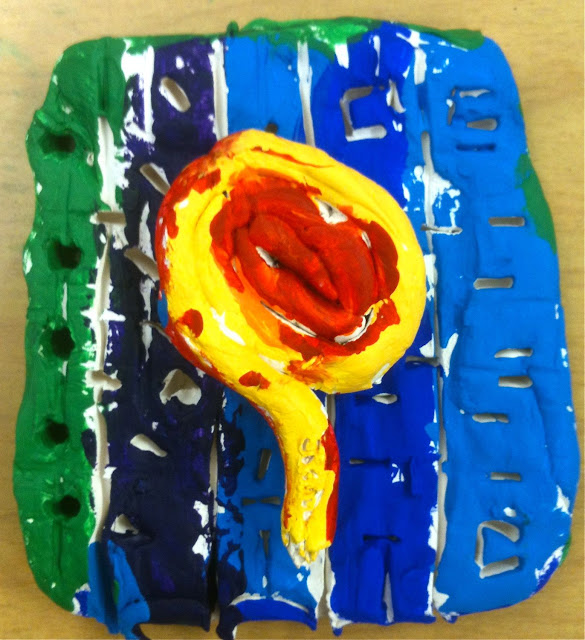Discussion: Landscape
Forground
Middle Ground
Back Ground
Horizon Line
Using Chalk
Artist Roy De Forest
Look at the artwork: Rainforest Painter By Roy De Forest
Do you see a horizon line?
what is in the foreground?
What do you see in the middle ground?
What is happening in the background
Do you see any shapes?
ARTIST: Roy De Forest (1930–2007)
American painter known for his comic-like patchwork regionalist (California) style, often depicting dogs & other figurative content in his art.
Born in North Platte, Nebraska, De Forest grew up in Yakima, Washington and attended junior college there. He then attended San Francisco Art Institute and earned a bachelor's degree and master's degree at San Francisco State University.
His first show was in 1955. He taught at the University of California, Davis, from 1965 to 1992. A retrospective organized by San Francisco Museum of Modern Art toured in 1975.
He was one of the originators of a Northern California art movement once described by Washington Post art reviewer Sidney Lawrence as a style "in which counterculture thinking fused with an anything-goes, anti-art attitude harking back to the Dadaists of the World War I era." called "California funk," a classification De Forest disliked.
"At 75, Mr. De Forest is painting pretty much what he has painted for years: dogs, men in hats or headdresses, and supernatural beings against a flattened terrain
De Forest was born in 1930 in North Platte, Neb., the son of migrant farmworkers.
In addition to Thiebaud and Arneson, De Forest's colleagues in the UC Davis art department included such prominent artists as William Wiley, Manuel Neri and Ralph Johnson.
Prominent American sculptor John Buck, a student and longtime friend of De Forest, called the artist "the champion of imagination."
De Forest and his wife, Gloria, lived in Port Costa, Calif., on land populated by cattle, birds and the dogs that inspired so much of his art.
PROJECT: Using sharpies and chalk pastels create a wetland landscape:
Step1: Draw a triangle on the right hand side
Step2: Draw a horizon line from the middle of the triangle to the other side below this is now water
Step3: At the top of the triangle draw a tree trunk and have it y off over the water
Step4: draw a circle at the top of the left hand side
Step5: Draw a square anywhere you have space
Step6: Draw a heron on the bank
Small circle, two lines down, large circle, two lines down add feet, tuff of hair on both circles
Step7: Add tall grass on shore with tulles, ADD a moon or sun
Step8: in The circle add a wetland creature
Step9: in the square add another wetland creature
Step10: fill in the picture with fun color, dots and details like deforest.
MATERIALS:
Thick Paper
Chalk Pastels
Hair spray
sharpies or pencils




































